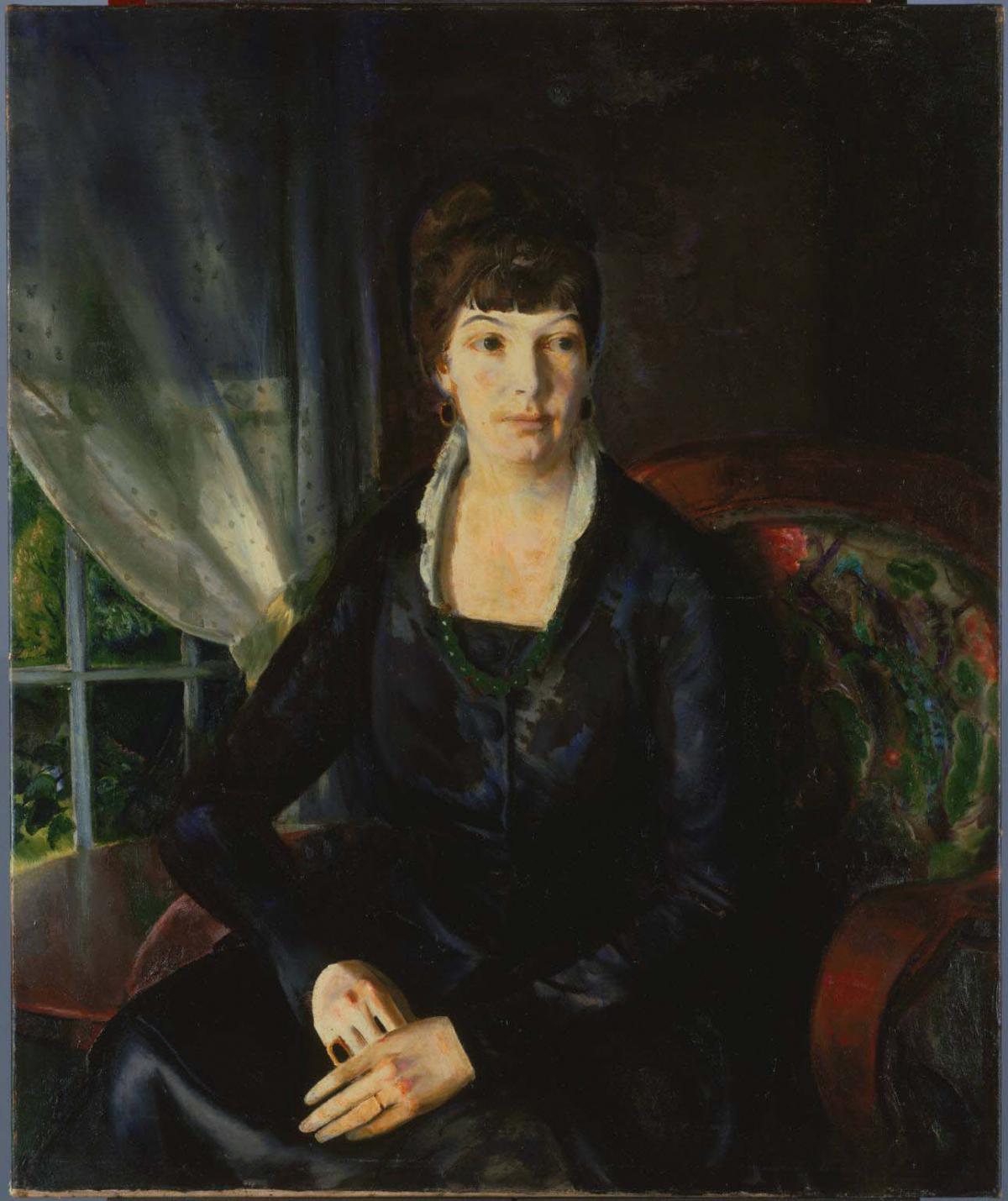Emma at the Window
George Bellows ( 1920 )

Between 1911 and 1924 Bellows painted eleven portraits of his wife, Emma Story Bellows (1884–1959). The Phillips canvas is one of the last versions. Bellows created Emma at the Window, as well as other portraits of his friends and family, during his 1920 summer in Woodstock, New York, where he had rented a house and where he became involved in an artistic community that included Henri, Kroll, and Speicher. Attracted by the exceptional light, Bellows devoted the summers to painting in Woodstock, while he reserved his winters in New York for lithography and drawing.
His mature portraits, such as Emma at a Window, reflect Bellows’s admiration for the Old Masters and for Thomas Eakins, as well as his respect for contemporary color theories. By this time he had abandoned the Henri-influenced impasto-laden surfaces, the frenetic brushwork, and the dark, dim backgrounds of his early portraits. Bellows painted Emma at the Window with thin, sleek brushstrokes and used the near-complementary colors red-purple and green (pervasive in the embroidered chair and round table) for balance. A devoted and respectful husband, he placed his wife in a formal, elegant setting and gave her straight posture and a patrician expression, thus heightening her projection of dignity and strength of character.
At this time, Bellows was interested in cubism’s influence on American art and attended lectures on Hambridge’s theory of Dynamic Symmetry, which centered on reducing all things to ideal geometric forms. As he painted, Bellows kept these theories in mind. He composed Emma at the Window with horizontals, verticals, and diagonals—as seen in the window as well as the seated figure, particularly her arms, crossed at right angles. Only Emma’s gaze breaks out of the geometrical format. In its austere simplicity the figure reflects the artist’s emphasis on geometric purity, giving gravity and dignity to his portrayal of his wife.